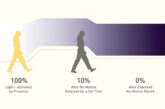
Need help with cracking those EICR codes? The technical team at NAPIT, with the help of the 18th Edition Codebreakers publication, answer your latest coding queries. Click on the photos for a closer look!
CHRIS MARTIN: THIS IS A GENUINE PHOTO OF THE DECORATOR’S HANDY WORK AND EXTENSION LEAD PLUG.
While BS 7671 is for fixed electrical installations, not portable appliances, where we come across these types of dangerous situations with immediate risk of electric shock when carrying out an EICR we have a duty to report to the client and take steps to remove such a danger.
The damaged plug top exposed the live parts of the fuse terminals and would attract a classification code C1. This is simple to rectify by switching off the plug top at the socket-outlet, removing the plug top and cutting the plug top from the flexible cable.
The decorator may not be best pleased, but everyone has a duty of care when in the workplace and should not place any other trades in danger.
The other issue due to ongoing work is the open hole in the plasterboard above the socket-outlet which can allow access to live parts, permit dust and debris entering the terminals of the socket-outlet. While work is being carried out on or near live electrical systems these have to remain safe for those working in the vicinity, including any temporary supplies that may be required.
Therefore, the classification code would be a C1, Danger present -Risk of Injury, for exposed live Cterminals of the plug top. Additionally, the socket-outlet could also attract a C1.
Order your copy of NAPIT Codebreakers here
Find more Codebreakers articles here










